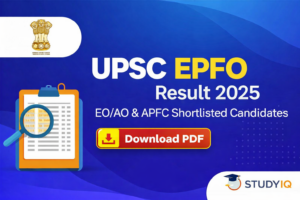Q8. e-governance, as a critical tool of governance, has ushered in effectiveness, transparency and accountability in governments. What inadequacies hamper the enhancement of these features? (10m) – Governance
Introduction
You can start the answer by how e- governance has gained prominence in India:
E-governance, which uses information and communication technologies (ICTs) to improve the delivery of government services, has found widespread adoption in India via a number of initiatives such as Digital India mission, National e-governance plan etc.
Body
The benefits provided by e-governance can be discussed in short followed by the inadequacies:
E-governance, as a critical tool of governance, has ushered in:
- Effectiveness: by automating tasks, streamlining processes, and reducing paperwork.
- E.g. Reduced processing times for income tax filing and passport applications.
- Transparency: by making government information readily accessible to citizens.
- E.g. Online RTI Portals
- Accountability: by holding government officials accountable for their public expenditure and holding them accountable for their actions.
- E.g. The use of Aadhaar for direct benefit transfers (DBT) has reduced leakage and corruption in subsidy programs.
Inadequacies hampering e-governance in India:
- Digital divide:
-
-
- Urban-rural divide: Only 14.9% of rural households have internet access compared to 42% in urban areas.
- Gender divide: 25% of adult women in India own smartphones compared to 41% of adult men.
-
- Low levels of digital literacy: only 38 percent of households in the country are digitally literate.
- Privacy and security concerns: In 2023, a data breach in the CoWIN portal exposed the personal data of over 3 million people.
- Lack of Legal and Regulatory Frameworks: to address issues like digital rights, data protection, and online accountability, leaving gaps in the legal framework.
- Interoperability Issues: Interoperability and data sharing among various government departments in e-governance can be complex and costly.
- Corruption: According to a 2021 report by Transparency International, India ranked 85th out of 180 countries on the Corruption Perception Index.
- Inadequate Infrastructure: Lack of internet connectivity and continuous supply of electricity in rural areas is a great challenge for effective e-governance.
Conclusion:
You can conclude by listing the Key recommendations by the 2nd Administrative Reforms Commission (2nd ARC) for e-governance, that include:
- Promote the use of Public-Private Partnership (PPP) mode for certain components of e-governance projects.
- Develop a strategy to protect critical information infrastructure assets.
- Upgrade the skills of individuals associated with e-governance project implementation.
- Maintain State Data Centres (SDCs) by government agencies like NIC, especially for handling sovereign data.
- Attention should be given to improve digital infrastructure especially in rural areas.
Check out the UPSC Mains GS Paper 2 2023 Analysis with detailed expatiation of the topics of Mains GS Paper 2 By the Study IQ Experts


 UPSC EPFO Result 2025 Out: EO/AO and APF...
UPSC EPFO Result 2025 Out: EO/AO and APF...
 UPSC CSE Interview Schedule 2025: Dates,...
UPSC CSE Interview Schedule 2025: Dates,...
 UPSC EPFO Cut Off 2025 (Expected): Categ...
UPSC EPFO Cut Off 2025 (Expected): Categ...

























